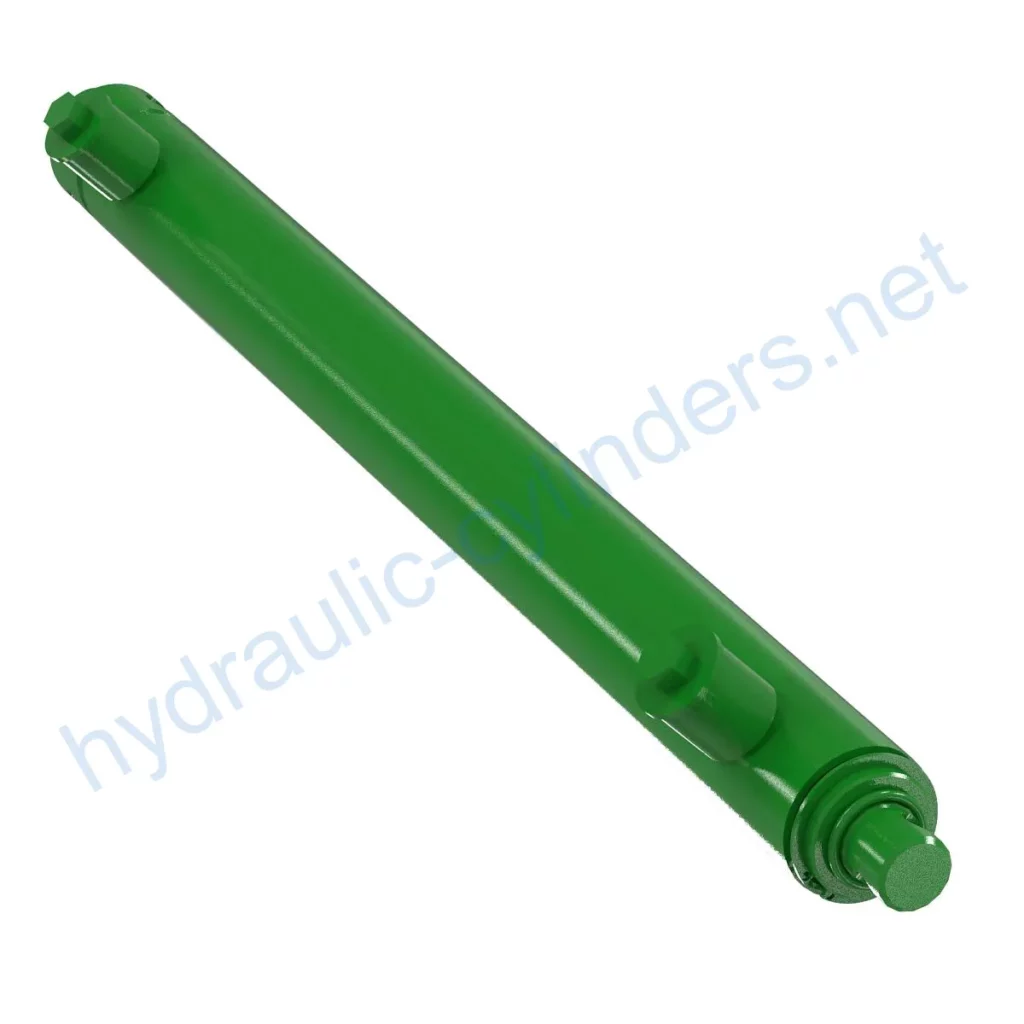Replacement Of AHC17556 Reel force Hydraulic Cylinder
The Replacement Of AHC17556 Reel force Hydraulic Cylinder is a hydraulic cylinder that is designed to replace the AHC17556 model. It is used in various equipment models including 616, 616R, 618, 620, 622, 625D, 625F, 630, 630D, 630FD, 635, 635D, 635F, 635FD, 640D, 640FD, 645FD, 725D, 730D, 730FD, 735D, 735FD, 740D, 740FD, 745FD, HD35F, HD35R, HD40F, HD40R, HD45F, HD45R, HD50F, HD50R, RD30F, RD35F, RD40F, RD45F, RDF 30, RDF 35, RDF 40, and RDF 45.
Product Specifications
- Weight: 6.14 lb
- Height: 1.5 in
- Width: 2.9 in
- Length: 19.5 in
Product Features
- Improved equipment performance: Replacing damaged or worn-out hydraulic cylinders can restore the equipment’s normal operational capabilities, ensuring its performance in various applications.
- Enhanced safety: Regularly replacing hydraulic cylinders can reduce safety hazards caused by cylinder failures, ensuring the safety of operators and equipment.
- Overload protection: New cylinder designs often consider better overload protection mechanisms, improving safety.
- Quick installation: Modern hydraulic cylinders are designed for easy installation and replacement, reducing downtime.
- Standardized components: Many hydraulic cylinders are standardized products, making it easy to obtain replacement parts in the market.
We can produce this product and our hydraulic cylinders can perfectly replace these models.
Applications
Here are three examples of applications for this hydraulic cylinder:
- Excavators: The hydraulic cylinder on the excavator’s boom or bucket may get damaged due to prolonged use or overload, requiring replacement to restore normal operation.
- Cranes: The hydraulic cylinder on the crane’s boom is prone to wear during frequent lifting and lowering processes, requiring regular replacement to ensure safety.
- Tractors: The hydraulic cylinder on the front-end loader of a tractor may experience leaks or performance degradation during continuous lifting and tilting operations, necessitating replacement.
Maintenance Tasks
Here are three common maintenance tasks for the hydraulic cylinder:
- Regular inspections: It is important to regularly inspect the hydraulic cylinder for any signs of wear, leaks, or other issues.
- Proper lubrication: Applying appropriate lubrication to the hydraulic cylinder can help reduce friction and extend its lifespan.
- Seal replacement and calibration checks: Periodically replacing seals and performing calibration checks can ensure optimal performance of the hydraulic cylinder.
Safety Considerations and Environmental Factors
When using hydraulic cylinders, it is important to prioritize safety measures to prevent accidents and ensure the wellbeing of operators. Additionally, considering environmental factors in the design and usage of hydraulic cylinders can minimize their impact on the surroundings.
Fault Diagnosis and Common Issues
Common issues and troubleshooting tips for hydraulic cylinders:
- Issue 1: Leakage – Possible Cause: Damaged seals or connectors. Solution: Replace the seals or connectors.
- Issue 2: Slow operation – Possible Cause: Insufficient hydraulic fluid or clogged valves. Solution: Check and refill hydraulic fluid, clean or replace valves if necessary.
- Issue 3: Noisy operation – Possible Cause: Air in the hydraulic system. Solution: Bleed the system to remove air bubbles.
Preventive Measures
To minimize potential issues with hydraulic cylinders, it is recommended to:
- Perform regular maintenance tasks as mentioned above.
- Follow proper installation, lubrication, and adjustment procedures.
- Provide guidance on aligning the cylinder correctly during installation.
- Suggest using appropriate installation brackets to secure the cylinder.
- Recommend inspection, repair, and replacement procedures.
- Offer replacement parts and rebuilding services to extend the lifespan of the hydraulic cylinder.
Design Considerations and Selection Criteria
When designing and selecting hydraulic cylinders, several factors should be considered:
- Load-bearing capacity
- Sealing effectiveness
- Durability
- Safety features
- Maintainability
Proper selection and design based on these factors can ensure optimal performance and longevity of the hydraulic cylinder.
Sealing and Lubrication
Hydraulic cylinders use various sealing components, such as piston seals and rod seals, made from wear-resistant materials like polyurethane and nitrile rubber. The cylinder body and threaded end surfaces are finely treated to enhance wear resistance. Regularly adding an appropriate amount of hydraulic oil for lubrication is necessary.
Regular Inspection and Preventive Maintenance
Regular inspections and preventive maintenance tasks are crucial for the proper functioning of hydraulic cylinders. It is essential to follow correct installation, lubrication, and adjustment procedures. Providing installation guidance, recommending the use of suitable installation brackets for cylinder fixation, suggesting inspection, repair, and replacement programs, and offering tips to extend the lifespan of the hydraulic cylinder.
Product Installation Guide
Correct installation is vital for the optimal performance of the hydraulic cylinder. Follow these steps:
- Ensure the mounting surfaces are clean and free from debris.
- Align the cylinder correctly with the equipment.
- Use appropriate installation brackets to securely fasten the cylinder.
- Check for any leaks or abnormalities after installation.
About Our Company
We are a manufacturer of replacement hydraulic

